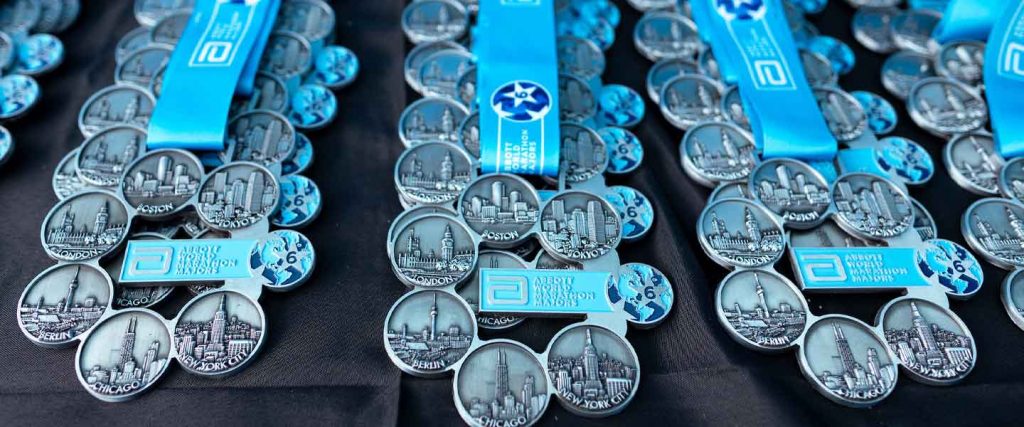
For years, serious marathoners talked about the „Big Six“ – those legendary races that every distance runner dreamed of conquering. In 2024, Sydney joined the party, making it officially seven World Marathon Majors. Complete them all and you earn the coveted Seven Star Finisher Medal, plus bragging rights that last a lifetime.
Each race has its own personality, quirks, and entry process that can be anywhere from straightforward to absolutely brutal. Here’s what you need to know about each one.
Tokyo Marathon (February/March)
Tokyo is basically marathon perfection. The course is fast and flat, the organization runs like clockwork, and the crowd support never stops. Getting in requires patience – the international lottery opens in August, but your odds aren’t great. Charity spots and sub-elite qualifying times (roughly 2:45 for men, 3:30 for women) offer better chances.
What makes it special: Japanese efficiency meets runner enthusiasm. The volunteers are incredible, and the energy from start to finish is infectious.
Boston Marathon (April)
The granddaddy of them all and still the toughest entry requirement. You need a Boston Qualifying time from a certified marathon, and even then, faster runners get priority when demand exceeds spots. A few charity bibs exist, but they’re rare.
What makes it special: You earned your place here. Between Heartbreak Hill, the Wellesley College scream tunnel, and finishing on Boylston Street, this one hits different.
London Marathon (April)
Royal parks, incredible crowds, and a finish on The Mall near Buckingham Palace. Entry comes through their public ballot (basically a lottery), Good-for-Age qualifying times for UK residents, or charity spots.
What makes it special: The roar when you cross Tower Bridge is unlike anything else in running. Plus, the costume game here is unmatched.
Sydney Marathon (September)
The newest addition to the Majors family. You’ll run across the Harbour Bridge and finish with the Opera House as your backdrop. Entry is through lottery, charity, or qualifying times (3:00 for men, 3:30 for women).
What makes it special: It’s the only Major in the Southern Hemisphere, so timing works perfectly if you’re planning around Northern Hemisphere race seasons. Plus, those views are unbeatable.
Berlin Marathon (August)
If you’re chasing a personal best, Berlin is your race. The course is pancake flat and perfectly designed for speed. Entry is through lottery (opens in October/November), charity, or guaranteed spots for fast times (around 2:45 for men, 3:00 for women).
What makes it special: This is where world records happen. The course is fast, the weather is usually perfect, and the finish at Brandenburg Gate is iconic.
Chicago Marathon (October)
Big city energy with a fast, flat course through all the neighborhoods that make Chicago special. Entry is lottery-based, though charity spots and qualifying times are available.
What makes it special: The crowd support is massive, the course is runner-friendly, and starting and finishing in Grant Park keeps everything centralized.
New York City Marathon (November)
Five boroughs, five bridges, and about two million spectators. Entry is notoriously tough – lottery odds are low, the 9+1 program requires running nine NYRR races plus volunteering, and time qualifying standards are strict. Charity is often your best bet.
What makes it special: Running through Brooklyn feels like a street party, and cresting the Queensboro Bridge into Manhattan is pure magic.
How the Star System Works
You don’t need to complete the majors in any particular order or timeframe. Each official finish gets registered to your Abbott World Marathon Majors profile, earning you a star. Complete all seven and you receive the Seven Star Finisher Medal at your final race – a serious piece of hardware that represents years of dedication.
Planning Your Major Marathon Journey
Start early. Lottery registration typically opens 8-12 months ahead, and popular travel dates book up fast.
Consider charity entries. They cost more upfront but guarantee your spot if you can meet the fundraising requirements.
Track your progress. Abbott provides a free online account where you can register your finishes and monitor your star collection.
Budget for the long haul. Most runners take several years to complete all seven majors. Between entry fees, travel, accommodation, and time off work, this is a significant investment.
The World Marathon Majors represent more than just races – they’re a passport to experiencing running culture around the globe. Whether you’re chasing one star or all seven, each major marathon tells its own story about what it means to go the distance.

Schreibe einen Kommentar